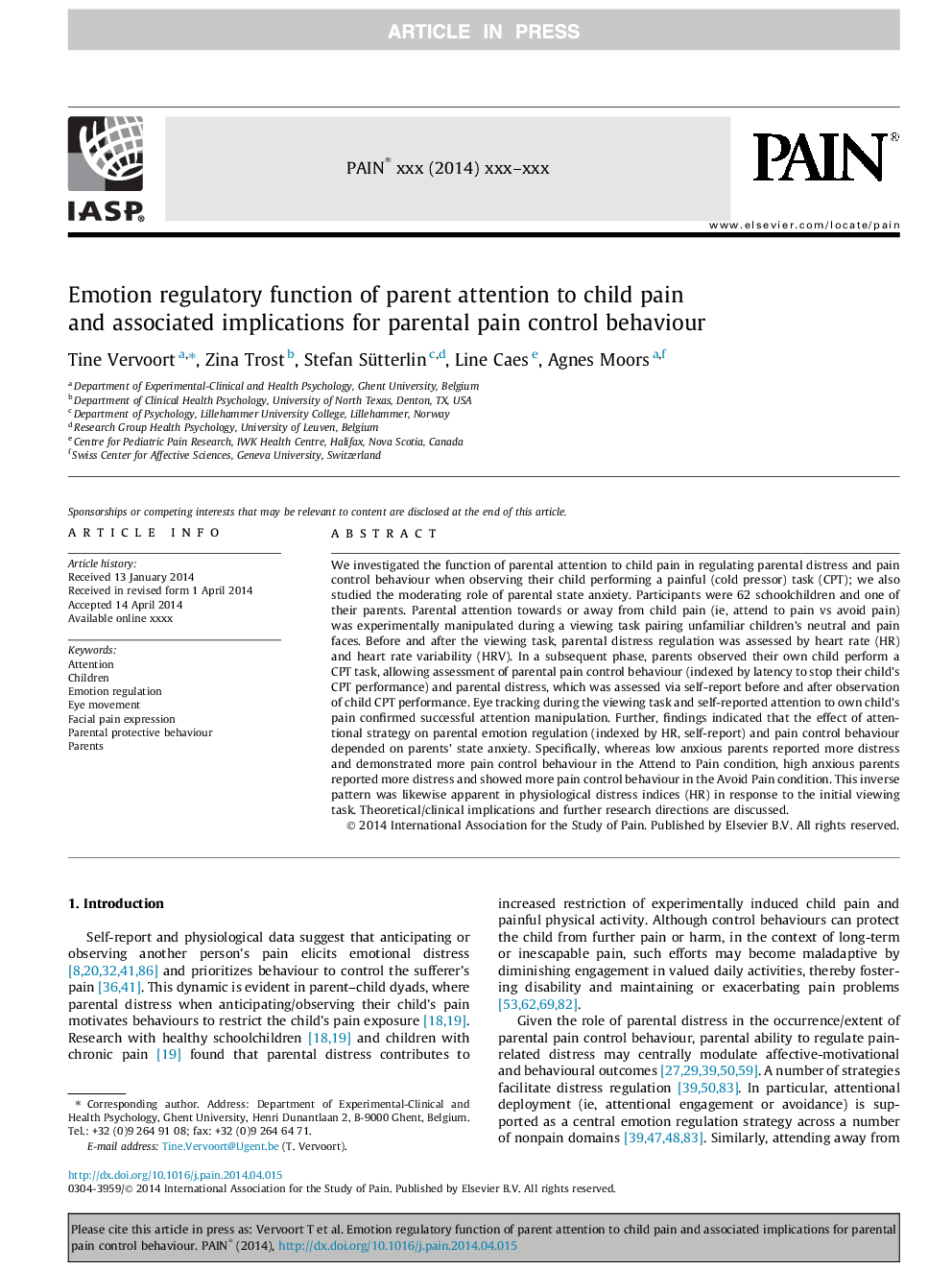| کد مقاله | کد نشریه | سال انتشار | مقاله انگلیسی | نسخه تمام متن |
|---|---|---|---|---|
| 10450304 | 918354 | 2014 | 11 صفحه PDF | دانلود رایگان |
عنوان انگلیسی مقاله ISI
Emotion regulatory function of parent attention to child pain and associated implications for parental pain control behaviour
ترجمه فارسی عنوان
نقش تنظیم کننده احساسات توجه والدین به درد کودک و پیامدهای مرتبط با آن برای رفتار کنترل درد والدین
دانلود مقاله + سفارش ترجمه
دانلود مقاله ISI انگلیسی
رایگان برای ایرانیان
کلمات کلیدی
توجه فرزندان، مقررات احساسی، جنبش چشم، بیان درد درد، رفتار محافظتی والدین، والدین،
موضوعات مرتبط
علوم زیستی و بیوفناوری
علم عصب شناسی
علوم اعصاب سلولی و مولکولی
چکیده انگلیسی
We investigated the function of parental attention to child pain in regulating parental distress and pain control behaviour when observing their child performing a painful (cold pressor) task (CPT); we also studied the moderating role of parental state anxiety. Participants were 62 schoolchildren and one of their parents. Parental attention towards or away from child pain (ie, attend to pain vs avoid pain) was experimentally manipulated during a viewing task pairing unfamiliar children's neutral and pain faces. Before and after the viewing task, parental distress regulation was assessed by heart rate (HR) and heart rate variability (HRV). In a subsequent phase, parents observed their own child perform a CPT task, allowing assessment of parental pain control behaviour (indexed by latency to stop their child's CPT performance) and parental distress, which was assessed via self-report before and after observation of child CPT performance. Eye tracking during the viewing task and self-reported attention to own child's pain confirmed successful attention manipulation. Further, findings indicated that the effect of attentional strategy on parental emotion regulation (indexed by HR, self-report) and pain control behaviour depended on parents' state anxiety. Specifically, whereas low anxious parents reported more distress and demonstrated more pain control behaviour in the Attend to Pain condition, high anxious parents reported more distress and showed more pain control behaviour in the Avoid Pain condition. This inverse pattern was likewise apparent in physiological distress indices (HR) in response to the initial viewing task. Theoretical/clinical implications and further research directions are discussed.
ناشر
Database: Elsevier - ScienceDirect (ساینس دایرکت)
Journal: PAIN® - Volume 155, Issue 8, August 2014, Pages 1453-1463
Journal: PAIN® - Volume 155, Issue 8, August 2014, Pages 1453-1463
نویسندگان
Tine Vervoort, Zina Trost, Stefan Sütterlin, Line Caes, Agnes Moors,
